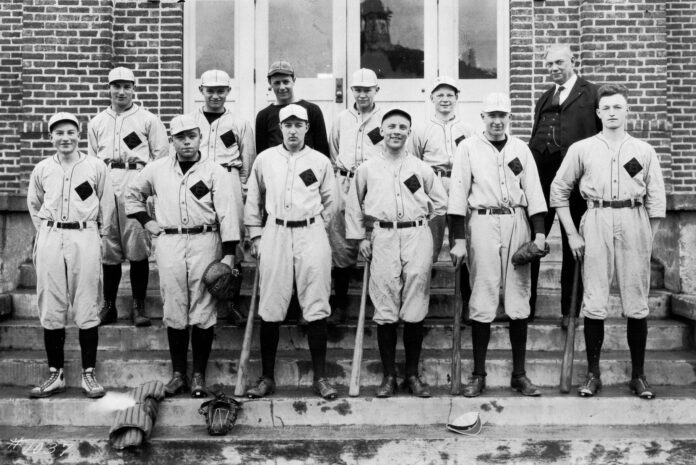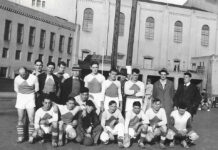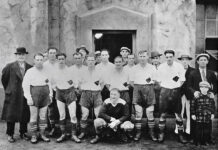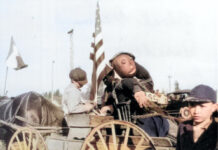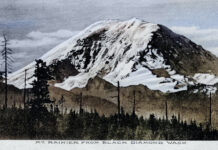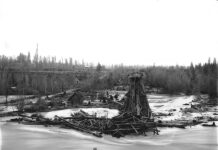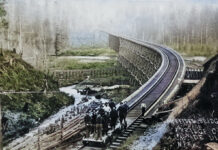By late April baseball is played throughout the country. Major League Baseball, minor leagues, colleges, high schools, and Little League are all in full swing. Baseball in the United States developed from older ball-and-bat games like rounders and cricket that had been played in England since before the American Revolution. Baseball’s early rules were developed around New York and Brooklyn in 1845. A baseball craze hit the New York metropolitan area in the mid-1850s, and by 1856 journalists were referring to game as the “national pastime.” The National Agreement of 1903 formalized two major leagues, and the first World Series was played that fall.
In coal mining towns like Black Diamond, baseball and soccer were widely popular. The coal company financed sporting teams and good players were often recruited by offering choice jobs in the mines. All the surrounding mining towns fielded teams. Intense rivalries developed and “fights were the normal way to end the ball game,” according to Dusalina Cavaletto, who later became a school teacher in Renton and whose life was profiled in the March 2019 issue of the Renton History Museum newsletter.
The baseball field along Highway 169 in the center of town dates to about 1900 when the Black Diamond Coal Mining Company donated a marshy area for a sports field. During off-hours and weekends, coal miners wheelbarrowed fill dirt and in time a real baseball field took shape. By 1915, a wooden stadium, bleachers, and bandstand were built and baseball games between rival coal mining teams were one of the top entertainment draws in town. The ballfield was even surrounded by an eight-foot-high wood fence. The property is now owned by the Enumclaw School District with a deed restriction forever reserving the property for athletic and recreational use by town folks.
Throughout town, children, both boys and girls played baseball on any level cow field or dirt lot that could be found. Ed Banchero remembered playing in the Cazaza family’s pasture, using dried cow pies as bases. Banchero recalled several informal teams organized along ethnic lines featuring Italians, Finlanders, and the Welsh and English. Banchero and many of his Italian playmates from childhood later played on the high school team.
Perkins’ Studio photo #1037 comes courtesy of JoAnne Matsumura, an Issaquah historian and image collector. It was recently acquired from the Callero family. The Black Diamond History Museum has the same image upon which Esther Babb recorded the players’ names. This photo of the 1924 baseball team was taken on the front steps of Black Diamond High School. Front row (L-R): Louie Callero, Petro ‘Pete’ Pioli, Charles Tenio, ? Rockey, Max Ferlich, Leonard Pierotti. Back row: Jim Vernarelli, Charles Moroni, Frank Guidetti, Ed Banchero, Charles Thompson, and coach Albert Weatherbee who was also school Superintendent. The team logo on the players’ left chest was cleverly designed to be a black diamond.

